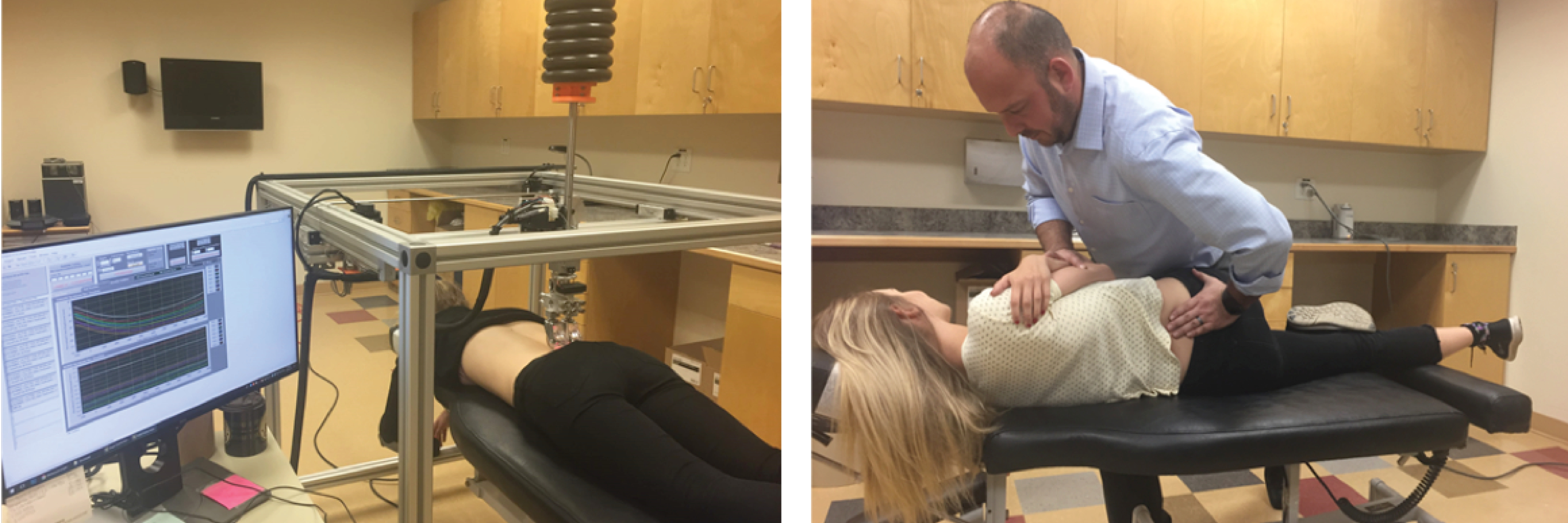Biomechanics and Low Back Pain
Low back pain (LBP), something that affects almost everyone at some point in their lives, is a condition that creates an enormous burden for healthcare systems, individuals and society.
In fact, LBP is the leading cause of disability worldwide, accounting for billions of dollars in health care expenditures. Unfortunately, only a small proportion of people (~1%) have a diagnosable cause of LBP. The rest of these LBP conditions are termed non-specific. Current LBP management typically focuses on relieving symptoms, which is largely ineffective when the pain source is unknown. As a result, current LBP management leads to inappropriate use of health-care resources, such as emergency department visits, specialist consultations, diagnostic imaging and pain-killer use, which is a low-value approach when health-care resources are limited.
In our quest to personalize back pain care, it is vital that we conduct research to help us better identify spine problems in the individuals who experience them. Because the primary role of the spine is to create a stable platform for daily tasks and movement, our research is currently focused on tests which can evaluate this function. In the same way that diagnostic tests for the heart are aligned with the heart's main function of pumping blood, our novel and developing diagnostic tests attempt to more accurately measure how the spine is able to help you move and work every day.
Any successful quest involves exploration and discovery-and ours is no different. In common use, there are a multitude of engineering tests used to assess the ability of bridges, airplanes and buildings to move and withstand forces, just like the spine. Knowing that these tests are well-developed, one of our discovery goals is to explore and adapt these tests to the spine. From this approach, we hope to develop new ways of measuring what the spine is doing and if it is malfunctioning. These tests include seismic testing for the spine and stiffness testing.
Seismic for the spine: To find out where oil is located beneath the ground, technicians apply strong vibrations to the earth's surface, then use very sensitive technology to read the resulting vibration patterns coming from the ground. From these readings, the location and amount of oil beneath the Earth's surface can be pinpointed. We were inspired to adapt this process to help identify back pain. Using the application of very gentle vibrations, we can measure the resulting vibrations in the spine, which can tell us if there is a problem in the back, where it is located, and how big it is.
Spinal stiffness: It is very common that people with back pain complain of stiffness in their spine. Unfortunately, there is no way to measure this stiffness in an objective and reliable way. Doing so would allow us to better determine not only the cause of the stiffness, but also to predict when it might happen and to monitor the effects of treatment over time. To do this, we have developed a technology that gently pushes into the spine using rolling wheels guided by lasers. We now have 9 of these units installed in universities throughout the world and are poised to collect massive amounts of data globally to determine how spinal stiffness measures can best be used to help those with back pain.
Clinical Trials
In our lab, we not only discover new technologies and develop them for use in the real-world, but we also have an established record of testing these devices to see if they have significant impacts on health. With this capability, our lab spans the entire spectrum of health care research, starting with discovery, then development, and finishing with clinical testing. Presently, our deep connections in the clinical community have allowed us to conduct clinical trials sponsored by such funding agencies as CIHR, NSERC and NIH.
